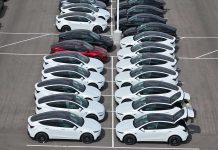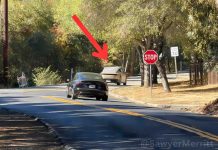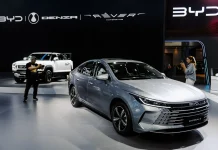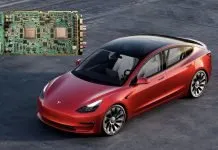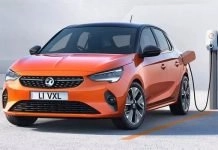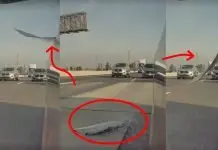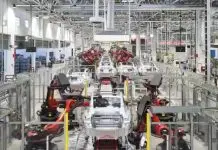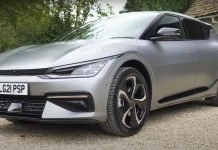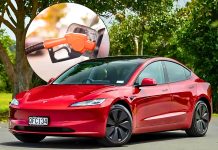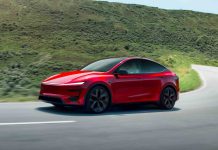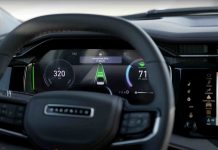The 2024 Tesla Model 3 Highland continues its commitment to improve automotive safety. The Active Hood in Model 3 Highland stands out as a great safety innovation designed to protect pedestrians. This feature underscores the increasing importance of pedestrian safety in automotive design.
Active Hood is integrated seamlessly into the Model 3’s design. It remains invisible and unobtrusive during normal driving conditions, preserving the sleek, aerodynamic lines that Tesla is known for. However, upon detecting a potential collision with a pedestrian, this feature springs into action by instantly transforming the vehicle’s profile. This transformation is not just a visual spectacle but a critical safety mechanism activated in the blink of an eye.
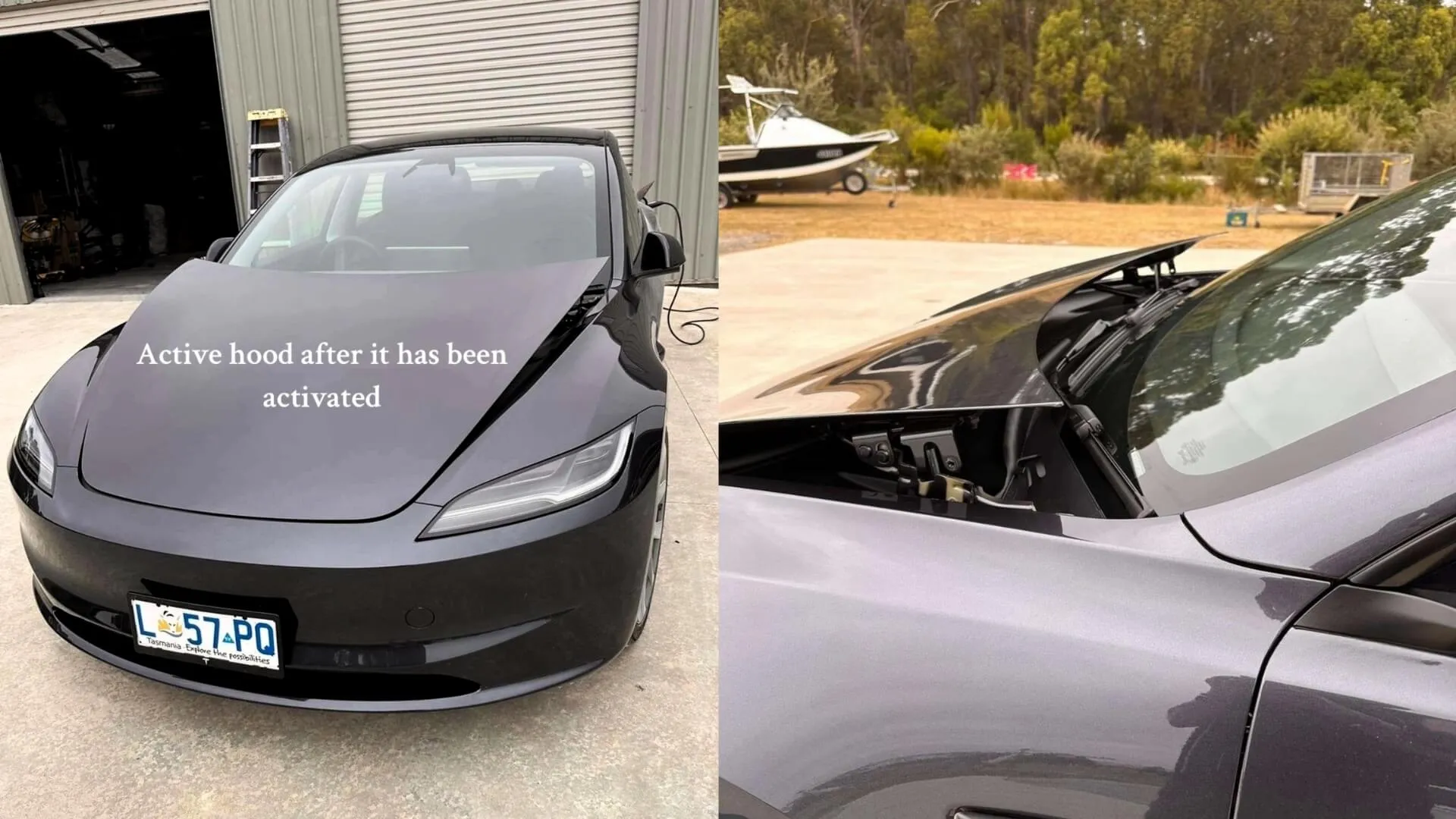
Table of Contents
Tesla Model 3 Active Hood Deployment
Active Hood Springs to Action in Kangaroo Encounter Down Under
In a rather unusual encounter, a Tesla Model 3 Highland in Australia demonstrated the real-world application of its innovative Active Hood technology after a minor collision with a kangaroo. Miraculously, both the driver and the kangaroo emerged unscathed from the incident, highlighting the effectiveness of the Active Hood system which is designed to deploy at speeds between 30 and 52 km/h, mistaking the kangaroo for a pedestrian in this case.
The system’s deployment, although slightly embarrassing for the driver who joked about driving around with it extended, underscores its sensitivity and functionality in protecting both vehicle occupants and unexpected road crossers alike. Now, the driver faces the practical concern of resetting the Active Hood to its original position, a small price to pay for the added safety it provides.
New Model 3’s Active Hood deployed from a run in with a kangaroo in Australia
No injuries for both driver & kangaroo. The active hood system deploys between 30 & 52kph. The system probably thought it was a pedestrian.
🦘 safe pic.twitter.com/WNUOgPtewX
— Nic Cruz Patane (@niccruzpatane) May 7, 2024
Mechanism of Active Hood
The Active Hood’s deployment is governed by a network of advanced sensors strategically placed at the front of the Tesla Model 3 Highland. These sensors are engineered to be highly sensitive to the immediate environment, particularly to the presence of pedestrians. They come into action when the vehicle is moving at speeds between 30 and 52 km/h (18.6 to 32.3 mph). At these speeds, the risk of pedestrian impacts is heightened due to the mix of vehicular and foot traffic.
Upon detecting a potential collision with a pedestrian, these sensors trigger the Active Hood system to engage. Within moments, the rear portion of the hood automatically elevates by precisely 80 mm (3.15 inches). This rapid elevation is designed to increase the space between the hood and the hard engine components beneath it.
Model 3’s Active Hood deployed
Multiple sensors at the front of the vehicle are designed to detect an impact with a pedestrian when Model 3 is moving between approximately 30 and 52 km/h, and raise the rear portion of the hood automatically approximately 80 mm. This increases… pic.twitter.com/WzO0siSbAg
— Nic Cruz Patane (@niccruzpatane) April 4, 2024
Visual Impact Upon Deployment
The deployment of the Active Hood markedly alters the Tesla Model 3’s sleek profile, albeit temporarily. When activated, the rear part of the hood rises which creates a noticeable gap between the hood and the base of the windshield.
This visual change is stark, serving as a physical indicator of the vehicle’s built-in pedestrian protection system at work. While the primary purpose of this feature is to enhance safety, its deployment also adds a dynamic aspect to the car’s design, momentarily revealing the sophisticated engineering that lies beneath the surface.
Impact Absorption and Distribution
The Active Hood acts as a dynamic cushion that absorbs and distributes the force of the impact across its surface. This absorption is a key factor in reducing the risk of serious injuries. Instead of transferring the full brunt of the impact directly to the pedestrian’s body, the elevated hood deforms slightly under pressure. This deformation allows the hood to absorb a significant portion of the energy from the collision, similar to a shock absorber.
The strategic design and deployment of the Active Hood have a profound potential to significantly reduce the severity of pedestrian injuries, especially head injuries, which are among the most life-threatening in vehicle-pedestrian collisions. Head injuries require a delicate balance of protection strategies due to the brain’s vulnerability to both direct impact forces and rapid deceleration injuries.
New Standard in Car Safety
The 2024 Tesla Model 3 Highland continues Tesla’s focus on improving automotive safety. The incorporation of the Active Hood feature demonstrates Tesla’s commitment to protecting not just the vehicle’s occupants, but also pedestrians. This technology works to actively mitigate the impact of collisions by going beyond traditional passive safety measures. Tesla’s approach to safety considers the needs of all road users, showing their dedication to a comprehensive safety philosophy.
Tesla’s focus on safety features like the Active Hood in the Model 3 Highland reflects the industry’s responsibility to reduce road traffic injuries and fatalities. As a leading cause of death globally, improving automotive safety is a societal necessity. Tesla’s commitment to innovations that protect all road users, not just vehicle occupants, sets a new standard for what consumers can expect from their cars in terms of comprehensive safety.
Conclusion
The integration of the Active Hood in the 2024 Tesla Model 3 marks a significant milestone in automotive safety. This feature is not merely an enhancement of the vehicle’s safety suite but a pioneering leap forward in pedestrian protection. By actively responding to imminent collisions with pedestrians, the Active Hood showcases how technology can be harnessed to create safer environments for all road users.
The significance of the Active Hood extends beyond its immediate safety benefits. It represents a paradigm shift in how automotive manufacturers approach the challenge of road safety. Tesla has set a new benchmark, demonstrating that the safety of pedestrians can be significantly improved through thoughtful engineering and technological advancement.
This sets a precedent that others in the industry will likely follow, sparking a wave of innovations aimed at reducing the impact of vehicles on pedestrian safety.

